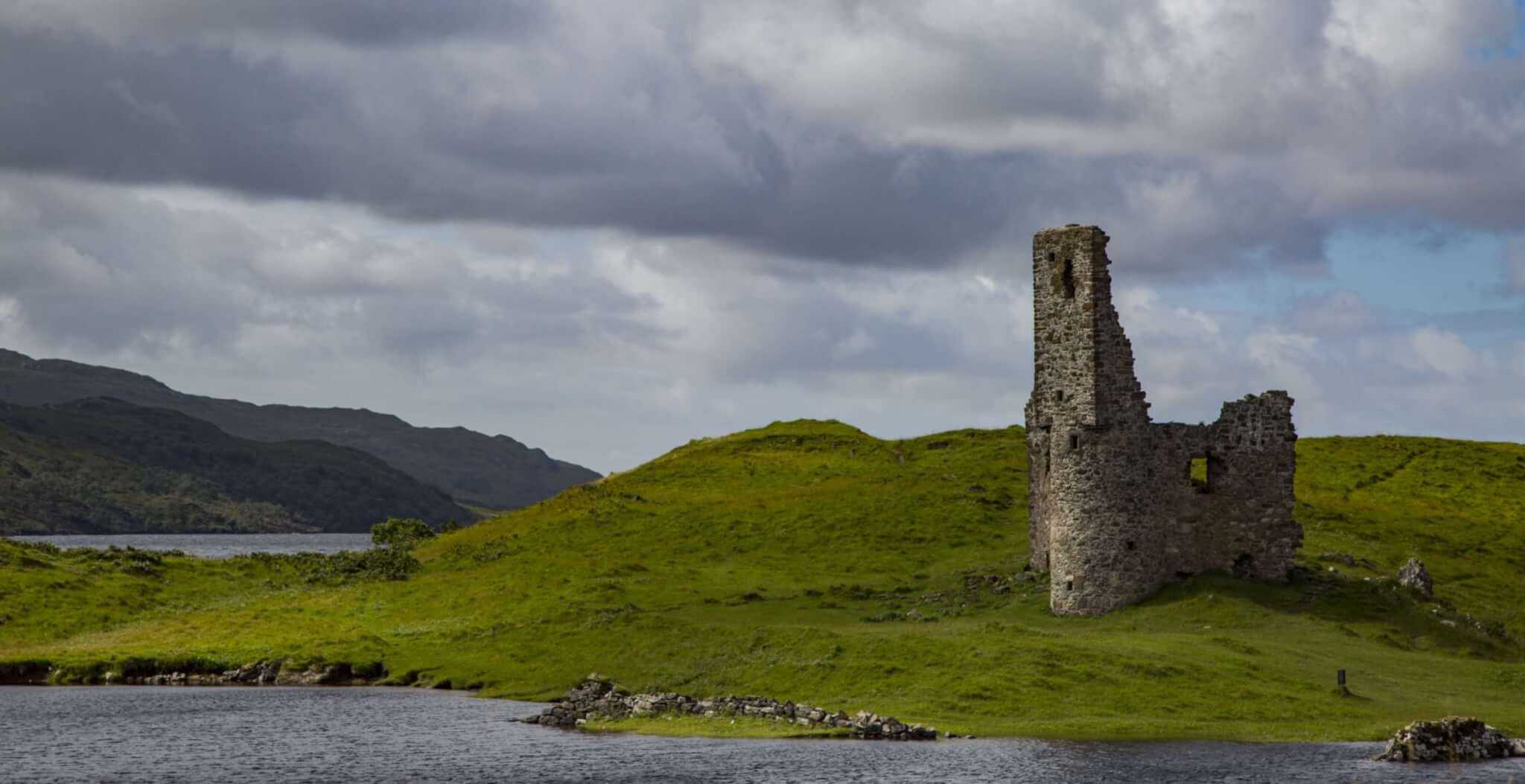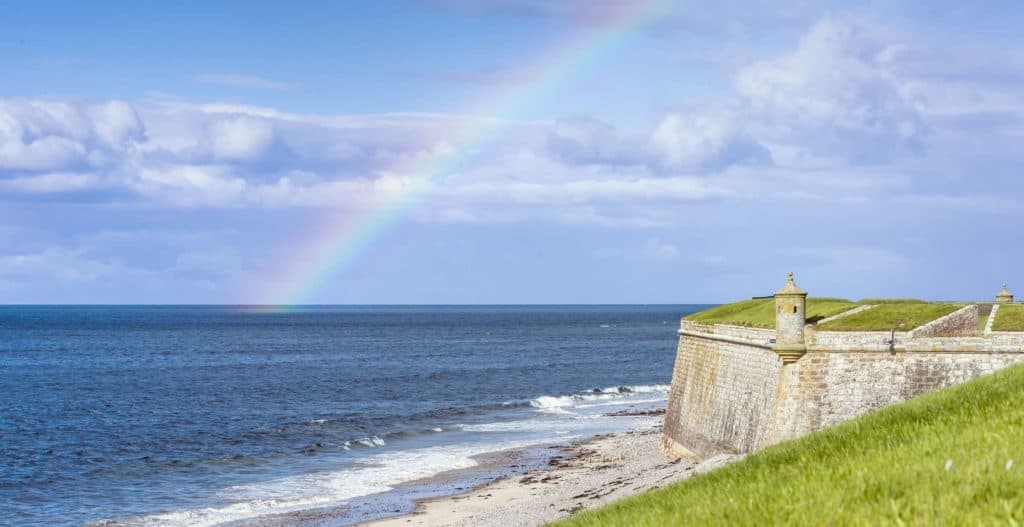Inchnadamph in the parish of Assynt, Sutherland, in the Scottish Highlands is today a tiny hamlet. In the past it comprised of two substantial settlements separated by the River Traligill. Inchnadamph lay to the south of the river and the area to the north was known variously as Kirkton, Achnahiglash or Balnaheglise, all names incorporating words meaning church.
From earliest times until the Clearances this was the heart of Assynt. An increasing body of evidence indicates it was also an important location in the early northern spread of Christian belief.
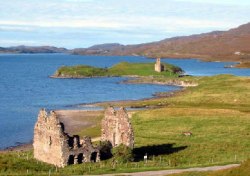 The settlements are situated on some of the most fertile soil in Assynt, formed by the weathering of the underlying Durness Limestone. The whole district is rich in prehistoric sites and close to Inchnadamph. There are a number of Chambered Burial Cairns, dating back some five thousand years. Fragments of an 8 ~ 11th Century Celtic Cross found in the churchyard highlight the antiquity of the site of the former Parish Kirk, and in the adjoining field a circular moat provides further evidence of early medieval habitation.
The settlements are situated on some of the most fertile soil in Assynt, formed by the weathering of the underlying Durness Limestone. The whole district is rich in prehistoric sites and close to Inchnadamph. There are a number of Chambered Burial Cairns, dating back some five thousand years. Fragments of an 8 ~ 11th Century Celtic Cross found in the churchyard highlight the antiquity of the site of the former Parish Kirk, and in the adjoining field a circular moat provides further evidence of early medieval habitation.
In the later Middle Ages the MacLeod Lairds of Assynt built Ardvreck Castle, the dramatic ruins of which stand on a peninsula jutting into Loch Assynt. They lived there for two centuries and the major part of their burial vault, which was probably attached to the medieval Kirk, stands in the centre of the churchyard. By the early years of the eighteenth century control of Assynt had passed to the MacKenzies.
They built a grand mansion, the first double gable building in the north, on the shore near the castle. Yet in a decade the MacKenzies were facing financial ruin and Calda House went up in flames. In 1741 work finally began on a new Kirk, which was much needed since the medieval church had been a ruin for many years.
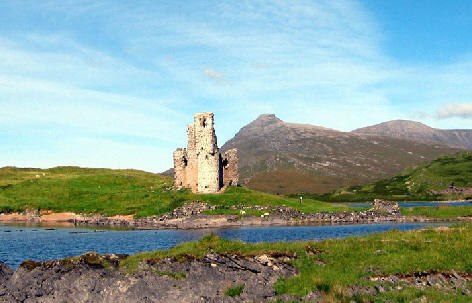
Throughout the eighteenth century the population steadily grew until the clearances which took place between 1812 and 1821. From that time Inchnadamph slowly declined in importance. The church remained open and was restored in 1900. Clientele from far afield, visiting the angler’s inn at Inchnadamph, used to attend Sunday church but Lochinver had become the main settlement and the Kirk finally closed in the 1970’s.
Twenty years later the castle and Calda House were assessed as being under severe threat of collapse. A section of the Kirk’s roof gave way and the rest of the building looked set to follow.
The Project
In 1997 Historic Assynt was formed to prevent three of the North Highlands’ most significant sites deteriorating into rubble.
Before work could start Historic Assynt set about acquiring title to all three sites whilst raising the necessary funding for the project. As Ardvreck Castle and Calda House were already Scheduled, the group made the case for the old churchyard and the MacLeod vault to be added to the list of ancient monuments of national importance, and for the former Kirk to be added to the list of Category B historic buildings.
The project team has worked painstakingly to conserve and consolidate each of the buildings in an appropriate way whilst ensuring the monuments remain for both visitors and locals to enjoy.
As well as consolidating the buildings, Historic Assynt conducted a series of archaeological surveys of the sites including less obvious remains such as the Laird’s mill and kiln barn at Ardvreck and the gardens at Calda House.
As the only complete building, the Kirk, unused for thirty years, has been completely restored and remodelled to create a beautiful new history, genealogy and interpretation centre for the area.
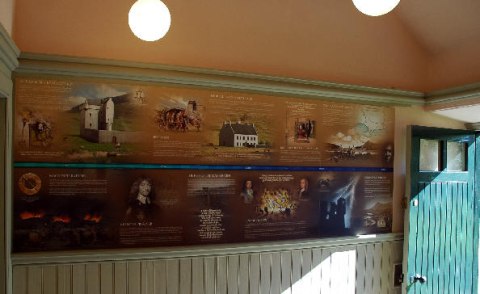
Historic Assynt is currently engaged in raising funds to consolidate the MacLeod Vault, restore the churchyard and further investigate the adjacent moated enclosure. Other projects, in conjunction withComunn Eachdraidh Asainte are in the planning stage.
Location
Inchnadamph is 81 miles from Inverness, a route that passes through some of the most remarkable scenery in Britain.
Follow the A9 north for 8 miles to the Tore roundabout and turn onto the A835. This crosses the backbone of the North Highlands, arriving at Ullapool on Loch Broom after a further 49 miles. The A835 continues North for 18 miles to Ledmore Junction. After turning left on the A832, Inchnadamph is reached in 6 miles.
Immediately after the Inchnadamph Hotel, where there is a public car park, the Field Centre is to the right and the restored Kirk to the left. The car park for Ardvreck and Calda, with views along the loch encircled by Assynt hills, is reached after a further 1.5 miles.
Text and images courtesy of Historic Assynt
